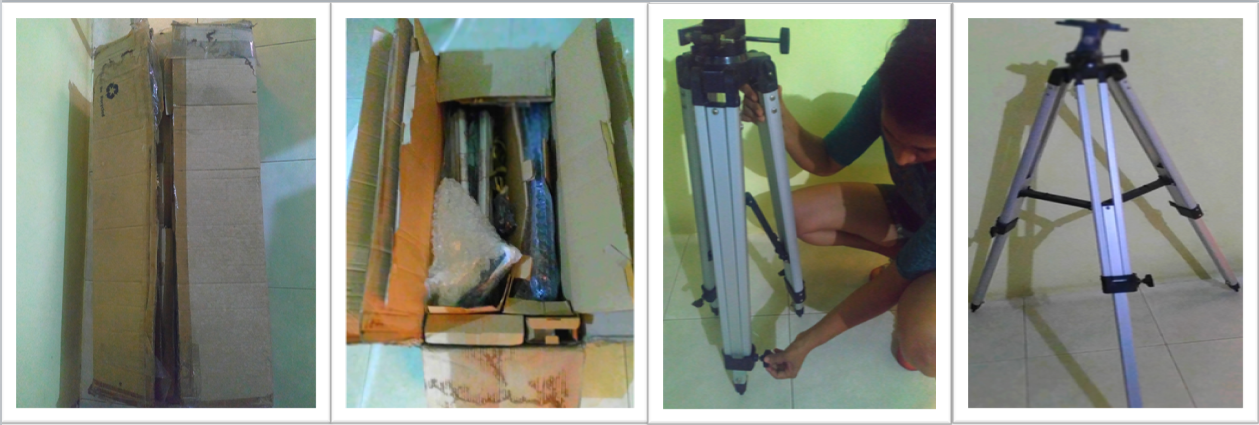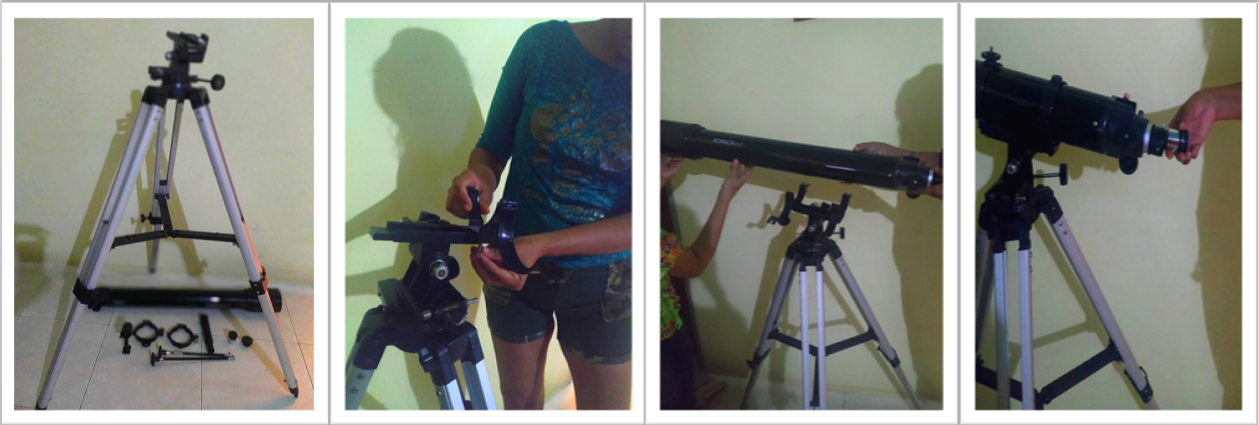[Eng\Esp] Armed the telescope to see the lunar eclipse.\Armado del telescopio para ver el eclipse lunar.
Hello friends of Hive, sorry for the time absent, I was in a bit of poor health, but I have recovered, and I am good to continue sharing content that you like.
To enjoy this lunar eclipse and Supermoon, my partner Lorena and myself decided to build a telescope that she has kept in her home, in order to observe this eclipse a little more closely. After we took it out of the box, we both asked ourselves, how do we put together a telescope, because the one who knew how to put it together left the country, who is Lorena's husband, and well, since technology at this time is advanced lately, we decided to look on the internet how to put together a telescope. On the internet the models were not the same, and we were observing, and practically we assembled it by guessing, placing pieces without knowing that they were going there, when we finally finished assembling it, we placed it on the balcony to see details of the eclipse.
Hola amigos de Hive disculpen el tiempo ausente, me encontraba un poco mal de salud, pero ya me recuperé y estoy bien para seguir compartiéndoles contenido de su agrado.
Para disfrutar de este eclipse lunar y Superluna mi compañera Lorena y mi persona decidimos armar un telescopio que ella tiene guardado en su hogar, con la finalidad de observar un poco más de cerca este eclipse. Luego que lo sacamos de la caja nos preguntamos las dos, como armamos un telescopio, porque el que sabía armarlo se fue del país, que es el esposo de Lorena, y bueno como la tecnología en este tiempo está últimamente avanzado, decidimos buscar en internet como armar un telescopio. En internet los modelos no eran los mismos y fuimos observando, y prácticamente lo armamos adivinando, colocando piezas sin saber que iban allí, cuando al fin lo terminamos de armar, lo ubicamos en el balcón para ver con detalles del eclipse.
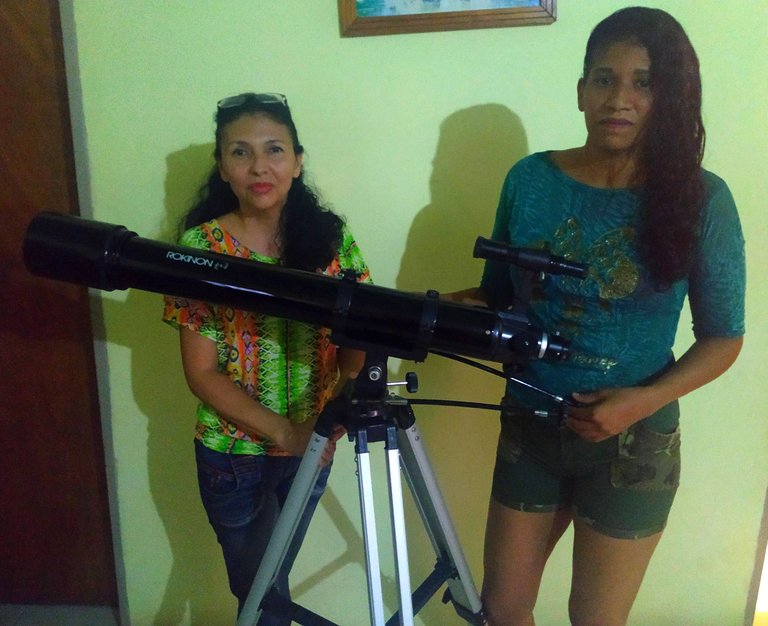
In these photos we are going to show you little of how we were setting up the telescope:
En estas fotos les vamos a ir mostrando poco como fuimos armando el telescopio:
The moon of this May 26 was even more special, since it coincides with perigee (the moment of the orbit in which our natural satellite is closest to Earth) and therefore, it will bring with it the largest full Moon and bright all year round.
The intensity of a lunar eclipse depends on the area of the earth's shadow that the Moon crosses, divided into two regions: the umbra, is the darkest part of the Earth's shadow and the penumbra, is where the source of light.
When the Moon passes only the penumbra an almost imperceptible penumbral eclipse takes place; But if the Moon passes completely through the umbra, then the eclipse takes on reddish or orange tints and is considered a total lunar eclipse, which reaches its maximum point when our satellite travels through the umbra.
La luna de este 26 de mayo fue aún más especial, pues coincide con el perigeo (el momento de la órbita en el que nuestro satélite natural se encuentra más cerca de la Tierra) y por lo tanto, traerá consigo la Luna llena más grande y brillante de todo el año.
La intensidad de un eclipse lunar depende de la zona de la sombra terrestre que atraviesa la Luna, dividida en dos regiones: la umbra, es la parte más oscura de la sombra de la Tierra y la penumbra, es donde se filtra parcialmente la fuente de luz.
Cuando la Luna atraviesa únicamente la penumbra se produce un eclipse penumbral casi imperceptible; pero si la Luna transita completamente por la umbra, entonces el eclipse toma tintes rojizos o naranjas y es considerado un eclipse total lunar, que alcanza su punto máximo cuando nuestro satélite recorre la umbra.
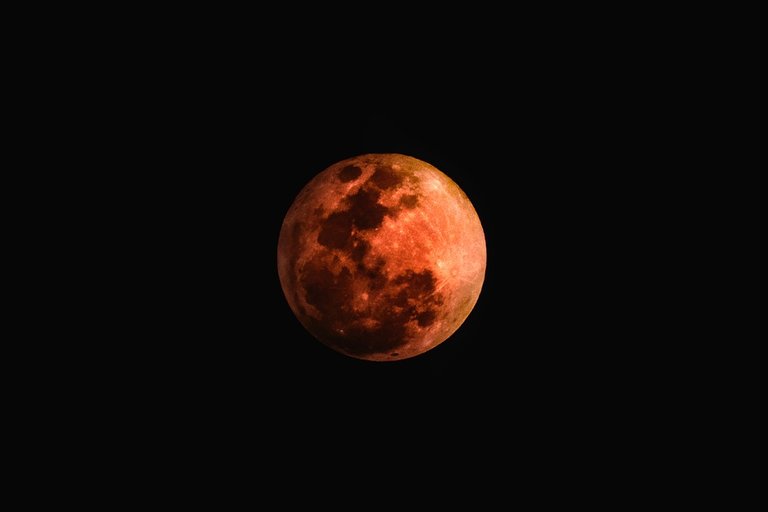
A total lunar eclipse occurs when the Earth passes between the Moon and the Sun, casting a shadow on the Moon. The three celestial bodies must be perfectly aligned for that to happen.
A supermoon occurs when a full or new moon coincides with the closest approach of our satellite to Earth. That makes the Moon look bigger.
During this eclipse, the Moon was reddish because the sunlight did not reach the Moon directly, but part of that light was filtered by the Earth's atmosphere and the reddish and orange colors were projected on our satellite.
Hence, the mysterious effect is popularly known as “blood moon”.
Un eclipse lunar total tiene lugar cuando la Tierra pasa entre la Luna y el Sol generando una sombra sobre la Luna. Los tres cuerpos celestes deben estar perfectamente alineados para que eso ocurra.
Una superluna ocurre cuando una luna llena o nueva coincide con el máximo acercamiento de nuestro satélite a la Tierra. Eso hace que la Luna se vea más grande.
Durante este eclipse, la Luna se vio rojiza debido a que la luz solar no llegaba directamente a la Luna, sino que parte de esa luz estaba filtrada por la atmósfera terrestre y se proyectaban sobre nuestro satélite los colores rojizos y anaranjados.
De ahí que misterioso efecto se conoce popularmente como "luna de sangre".
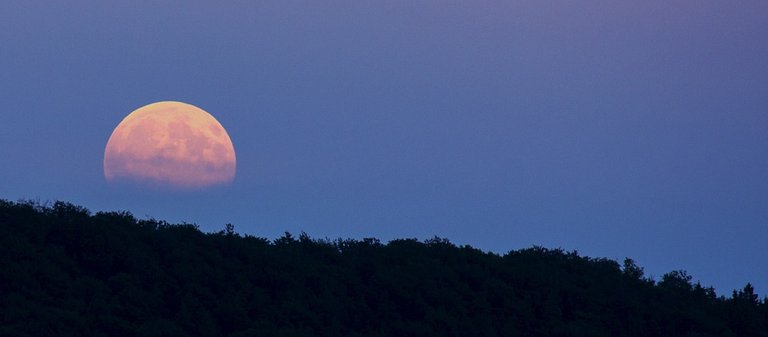
Translated from google translator Link
Photo editing program: PhotoFiltre 7
Las fotos fueron tomadas desde un Xiaomi Mi A2.
Traducido del traductor de Google Enlace
Programa para editar fotos: PhotoFiltre 7
I say goodbye until another opportunity.
Thanks for your support.
Me despido hasta otra oportunidad.
Gracias por su apoyo.
Copyright @imargasa. All rights reserved.
